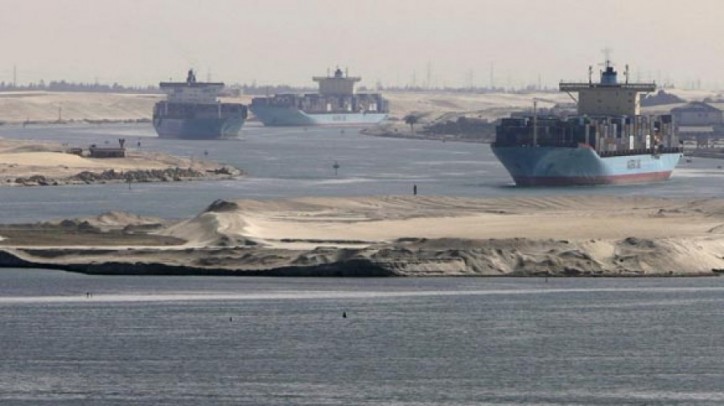Egypt intends to give permission for 24-hour passing of smaller vessels in the Mediterranean direct access to East Port Said instead of just eight hours a day. It will happen by opening a side channel near the Suez Canal, which will speed up the shipping traffic through the canal in both directions.
The Suez Canal Container Terminal (SCCT) is the company, which is partially financing the project. According to SCCT’s Managing director, Klaus Holm Laursen, the project would allow ships to enter and exit East Port Said, and divert shipping movements from the canal’s entrance.

Image: EgyptianNews
Preliminary calculations have estimated that the project for the building of the new channel will cost around $60 million. APM Terminals, which is part of the Maersk group, owns 55% of SCCT and is paying $15 million into the project.
“The waterway will benefit the entire east port, not just SCCT. You can’t have a seaport without having any ships; it’s like having an airport without a runway,” Laursen said.
Egypt will start the building of the new side channel after the opening of the new Suez Canal next month. Egyptian authorities believe it will be one of the first projects in a planned international industrial and logistics hub to be built around the canal.
According to a Suez Canal Authority source, the new channel would be 9.5 km (6 miles) long, 18.5 metres deep, and 250 metres wide. At least 7 months will be necessary for the full completion of the side channel.
Presently all vessels that come through East or West Port Said have to be coordinated with the Suez Canal convoy.
“Since Egypt wants to have as many ships as possible in the convoy because the Suez Canal is where it makes most money, this does not leave many hours free for sailing in and out of the East or West ports,” Laursen said.
As Mr. Laursen stated, the agreement of SCCT with the Egyptian government has been updated in 2007. According to it, the company has to pay $15 million into the side channel’s construction. SCCT paid half the amount in 2010 and will pay the rest upon the project’s completion, which was initially scheduled for 2012, Laursen said.